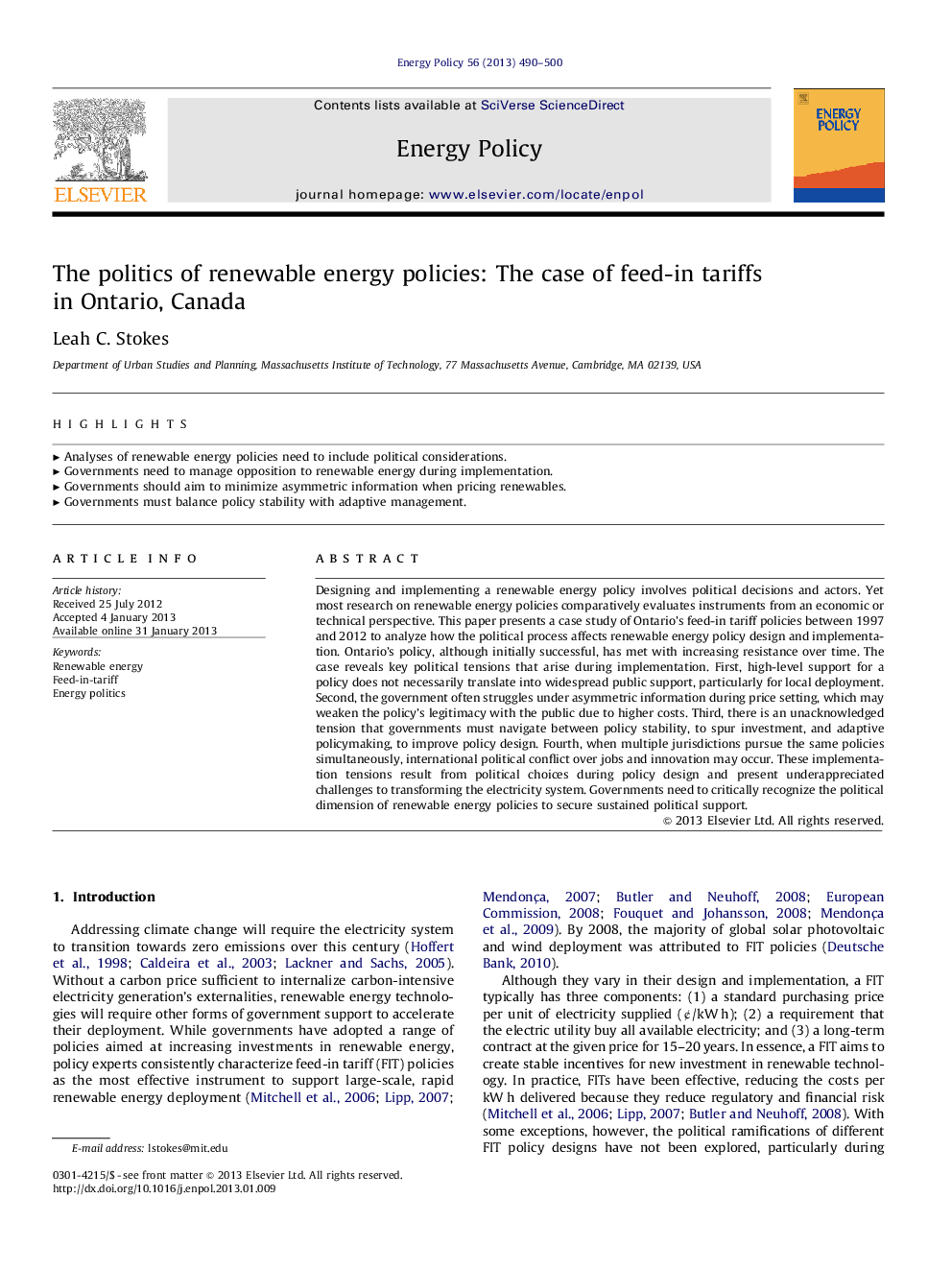| کد مقاله | کد نشریه | سال انتشار | مقاله انگلیسی | نسخه تمام متن |
|---|---|---|---|---|
| 994804 | 1481302 | 2013 | 11 صفحه PDF | دانلود رایگان |

Designing and implementing a renewable energy policy involves political decisions and actors. Yet most research on renewable energy policies comparatively evaluates instruments from an economic or technical perspective. This paper presents a case study of Ontario’s feed-in tariff policies between 1997 and 2012 to analyze how the political process affects renewable energy policy design and implementation. Ontario’s policy, although initially successful, has met with increasing resistance over time. The case reveals key political tensions that arise during implementation. First, high-level support for a policy does not necessarily translate into widespread public support, particularly for local deployment. Second, the government often struggles under asymmetric information during price setting, which may weaken the policy’s legitimacy with the public due to higher costs. Third, there is an unacknowledged tension that governments must navigate between policy stability, to spur investment, and adaptive policymaking, to improve policy design. Fourth, when multiple jurisdictions pursue the same policies simultaneously, international political conflict over jobs and innovation may occur. These implementation tensions result from political choices during policy design and present underappreciated challenges to transforming the electricity system. Governments need to critically recognize the political dimension of renewable energy policies to secure sustained political support.
► Analyses of renewable energy policies need to include political considerations.
► Governments need to manage opposition to renewable energy during implementation.
► Governments should aim to minimize asymmetric information when pricing renewables.
► Governments must balance policy stability with adaptive management.
Journal: Energy Policy - Volume 56, May 2013, Pages 490–500